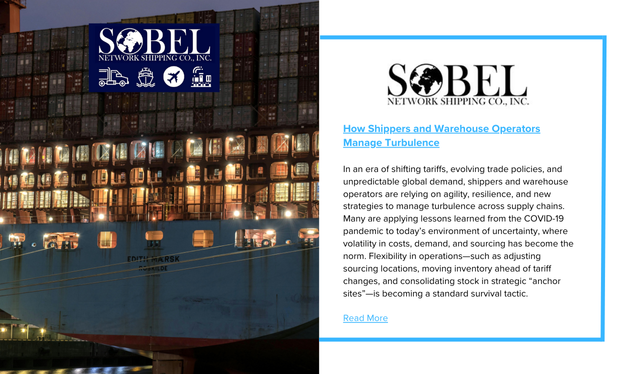In an era of shifting tariffs, evolving trade policies, and unpredictable global demand, shippers and warehouse operators are relying on agility, resilience, and new strategies to manage turbulence across supply chains.
Many are applying lessons learned from the COVID-19 pandemic to today’s environment of uncertainty, where volatility in costs, demand, and sourcing has become the norm. Flexibility in operations—such as adjusting sourcing locations, moving inventory ahead of tariff changes, and consolidating stock in strategic “anchor sites”—is becoming a standard survival tactic.
Warehouse operators are also emphasizing speed. With customer orders often placed late in the day and requiring same-day shipment, maintaining high service levels under pressure has become essential. Strategic placement of inventory across fewer but stronger hub facilities enables rapid backfill and minimizes stockouts.
Industry experts highlight that shippers are reassessing their global networks to better align with trade disruptions. By situating warehouses closer to customers and using multimodal transport strategies, companies are reducing risk while maintaining service levels. Many are also blending “dedicated” and “multiclient” warehouse models, leveraging third-party logistics providers to balance cost efficiency with flexibility.
At the same time, visibility and demand planning are emerging as critical differentiators. Some retailers, once dependent on suppliers for logistics visibility, are now adopting item-level tracking to align inventory with consumer demand more precisely. This approach reduces waste, prevents costly reorders, and ensures faster response to regional surges in demand.
Foreign trade zones (FTZs) are also seeing renewed interest. These secured facilities allow companies to delay or minimize tariff payments, optimize inventory flow, and even avoid duties entirely when goods are re-exported. For businesses navigating tariff volatility, FTZs offer a valuable buffer for both cash flow and supply chain resilience.
Despite global uncertainties, demand for warehouse space continues to climb. Large-scale developers report record-breaking build-to-suit activity, driven by companies looking beyond immediate disruptions and positioning strategically for long-term growth. This mindset reflects a broader trend: resilient supply chains are no longer a luxury but a necessity.
As one logistics executive put it, uncertainty may be constant, but resilience and adaptability are the tools that keep supply chains moving.


